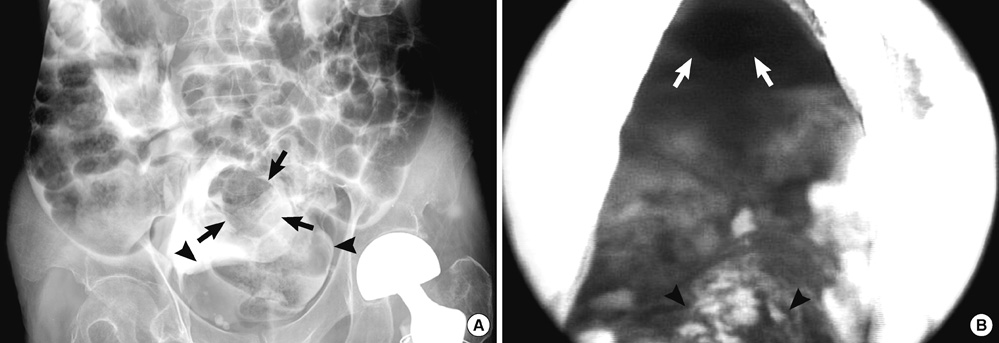J Korean Med Sci.
2011 Sep;26(9):1241-1243. 10.3346/jkms.2011.26.9.1241.
Intraperitoneally Placed Foley Catheter via Verumontanum Initially Presenting as a Bladder Rupture
- Affiliations
-
- 1Department of Surgery, Division of Urology, University of California San Diego, California, United States.
- 2Department of Urology, Chonbuk National University Medical School and Research Institute of Clinical Medicine, Jeonju, Korea. ybjeong@jbnu.ac.kr
- KMID: 1779402
- DOI: http://doi.org/10.3346/jkms.2011.26.9.1241
Abstract
- Since urethral Foley catheterization is usually easy and safe, serious complications related to this procedure have been rarely reported. Herein, we describe a case of intraperitoneally placed urethral catheter via verumontanum presenting as intraperitoneal bladder perforation in a chronically debilitated elderly patient. A 82-yr-old male patient was admitted with symptoms of hematuria, lower abdominal pain after traumatic Foley catheterization. The retrograde cystography showed findings of intraperitoneal bladder perforation, but emergency laparotomy with intraoperative urethrocystoscopy revealed a tunnel-like false passage extending from the verumontanum into the rectovesical pouch between the posterior wall of the bladder and the anterior wall of the rectum with no bladder injury. The patient was treated with simple closure of the perforated rectovesical pouch and a placement of suprapubic cystostomy tube.
MeSH Terms
Figure
Reference
-
1. Maki DG, Tambyah PA. Engineering out the risk for infection with urinary catheters. Emerg Infect Dis. 2001. 7:342–347.2. Lowthian P. An uncommon complication of urethral catheterization. Br J Urol. 1996. 78:805.3. St Luce S, Ninan AC, Hall JA, Kimberl IJ, Petros JA, Issa MM. Role of transrectal ultrasonography in diagnosis and treatment of retained Foley catheter. Urology. 2005. 65:1001.4. Merguerian PA, Erturk E, Hulbert WC Jr, Davis RS, May A, Cockett AT. Peritonitis and abdominal free air due to intraperitoneal bladder perforation associated with indwelling urethral catheter drainage. J Urol. 1985. 134:747–750.5. Spees EK, O'Mara C, Murphy JB, Michigan S, Newton CG. Unsuspected intraperitoneal perforation of the urinary bladder as an iatrogenic disorder. Surgery. 1981. 89:224–231.6. O'Gorman S, O'Brien A, Leahy A, Butler MR, Keane FB. Rectovesical fistula due to indwelling catheter. Br J Urol. 1990. 65:424.
- Full Text Links
- Actions
-
Cited
- CITED
-
- Close
- Share
- Similar articles
-
- Removal of non-deflatable retained Foley catheter in the bladder by percutaneous puncture of catheter balloon
- Extraperitoneal Bladder Rupture following a Normal Spontaneous Vaginal Delivery
- Results of endoscopically guided foley catheterization as a treatment of urethral rupture
- Nonoperative Management of Extraperitoneal Bladder Rupture
- A Study on Incidence of Bacteriuria according to Bladder Irrigation in Patients with Indwelling Catheter


